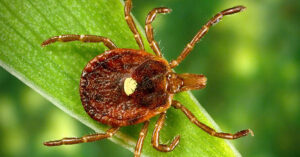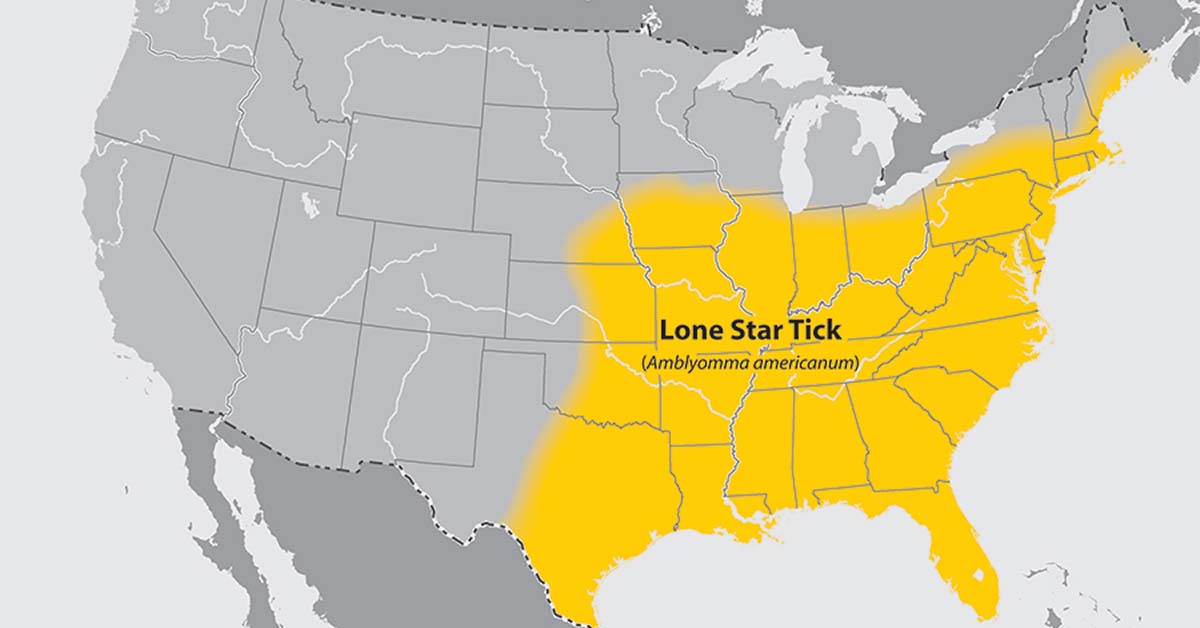 They’re spreading so quickly that even mainstream media outlets like “Today” are covering it: lone star ticks have been found in the southeast and all the way up the eastern seaboard.
They’re spreading so quickly that even mainstream media outlets like “Today” are covering it: lone star ticks have been found in the southeast and all the way up the eastern seaboard.
Their bite has potential consequences including the development of alpha gal allergy, an allergy that renders the victim allergic to red meat, and a recent study found that it may also be responsible for the development of arterial plaque leading to any number of cardiovascular diseases.
 Why the sudden spread? Dr Thomas Platts-Mills, head of the division of allergy and clinical immunology at the University of Virginia and who helped discover the link between the lone star tick and the allergy, has a theory: the explosion of the deer population on the east coast where a single deer can carry 500 ticks — primarily lone star ticks.
Why the sudden spread? Dr Thomas Platts-Mills, head of the division of allergy and clinical immunology at the University of Virginia and who helped discover the link between the lone star tick and the allergy, has a theory: the explosion of the deer population on the east coast where a single deer can carry 500 ticks — primarily lone star ticks.“This is a very odd situation: most ticks are specific for some animal, so there are dog ticks, pig ticks, cattle ticks — these ticks really don’t like humans much. But the lone star tick really does like humans,” Platts-Mills said. “We’ve got deer on the lawns and they’re dropping these ticks everywhere.”
Alpha gal symptoms can present three to six hours after eating red meat and include hives, swelling and life-threatening anaphylaxis.
If you suspect you might have contracted alpha gal allergy, visit an allergist who can diagnose the disease with a blood test.
CDC Recommendations for How To Prevent (Lone Star) Tick Bites
Before You Go Outdoors
- Know where to expect ticks. Ticks live in grassy, brushy, or wooded areas, or even on animals. Spending time outside walking your dog, camping, gardening, or hunting could bring you in close contact with ticks. Many people get ticks in their own yard or neighborhood.
- Treat clothing and gear with products containing 0.5% permethrin. Permethrin can be used to treat boots, clothing and camping gear and remain protective through several washings.
- Use Environmental Protection Agency (EPA)-registered insect repellents containing DEET, picaridin, IR3535, Oil of Lemon Eucalyptus (OLE), para-menthane-diol (PMD), or 2-undecanone. EPA’s helpful search tool can help you find the product that best suits your needs. Always follow product instructions.
- Do not use insect repellent on babies younger than 2 months old.
- Do not use products containing OLE or PMD on children under 3 years old.
- Avoid Contact with Ticks
- Avoid wooded and brushy areas with high grass and leaf litter.
- Walk in the center of trails.
After You Come Indoors
- Check your clothing for ticks. Ticks may be carried into the house on clothing. Any ticks that are found should be removed. Tumble dry clothes in a dryer on high heat for 10 minutes to kill ticks on dry clothing after you come indoors. If the clothes are damp, additional time may be needed. If the clothes require washing first, hot water is recommended. Cold and medium temperature water will not kill ticks.
- Shower soon after being outdoors. Showering within two hours of coming indoors has been shown to reduce your risk of getting Lyme disease and may be effective in reducing the risk of other tickborne diseases. Showering may help wash off unattached ticks and it is a good opportunity to do a tick check.
- Check your body for ticks after being outdoors. Conduct a full body check upon return from potentially tick-infested areas, including your own backyard. Use a hand-held or full-length mirror to view all parts of your body. Check these parts of your body and your child’s body for ticks:
- Under the arms
- In and around the ears
- Inside belly button
- Back of the knees
- In and around the hair
- Between the legs
- Around the waist
- Examine gear and pets. Ticks can ride into the home on clothing and pets, then attach to a person later, so carefully examine pets, coats, and daypacks.





